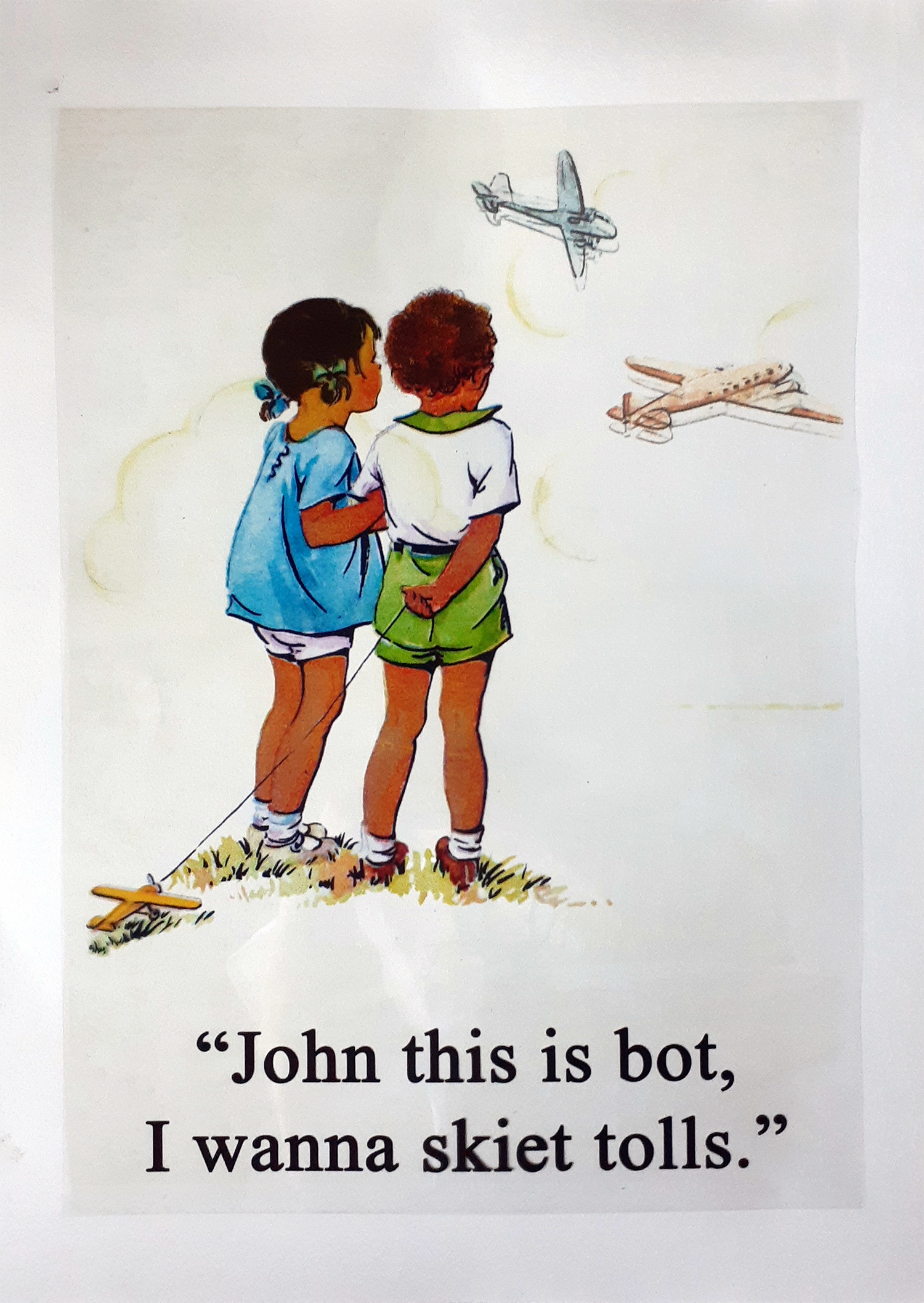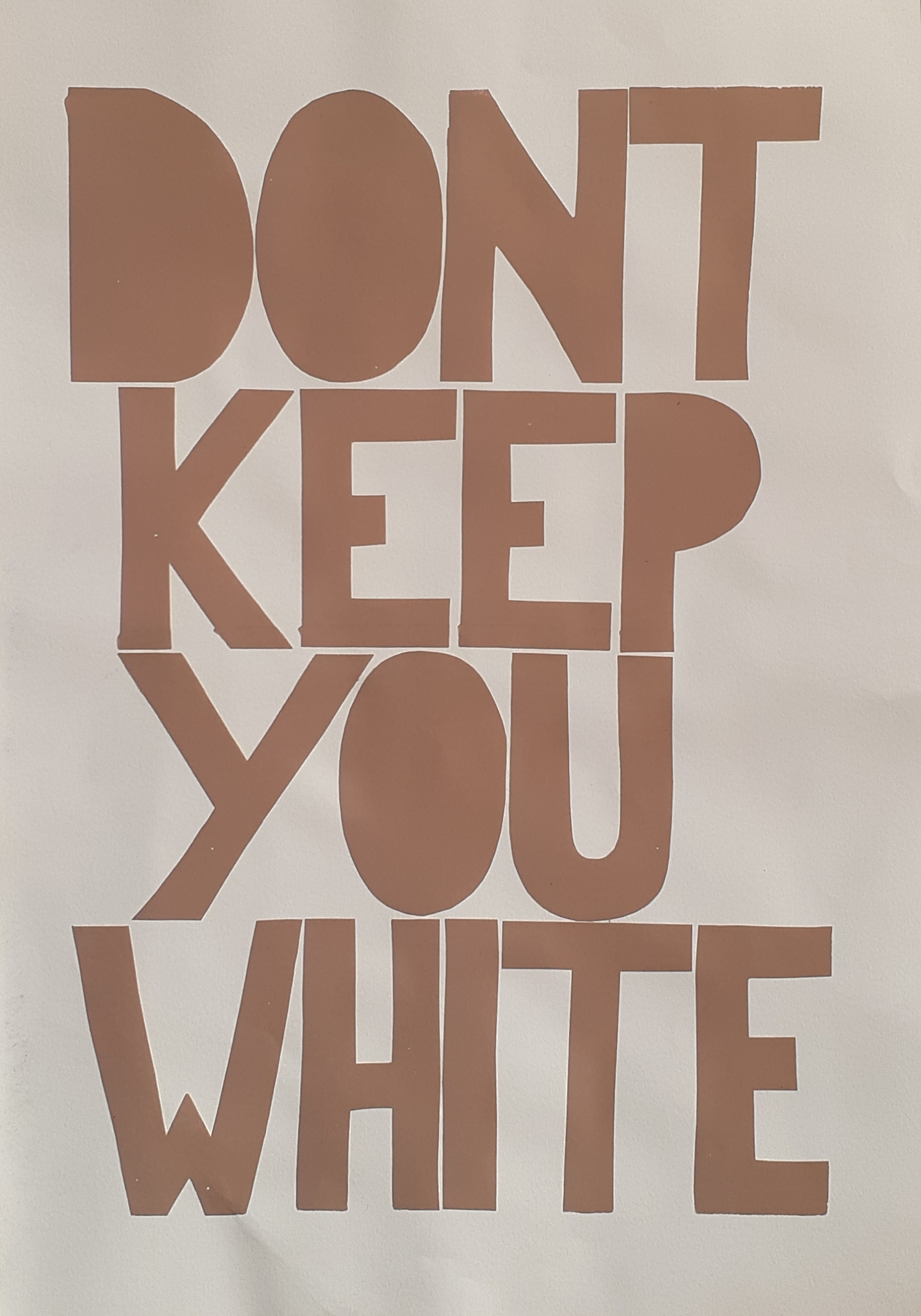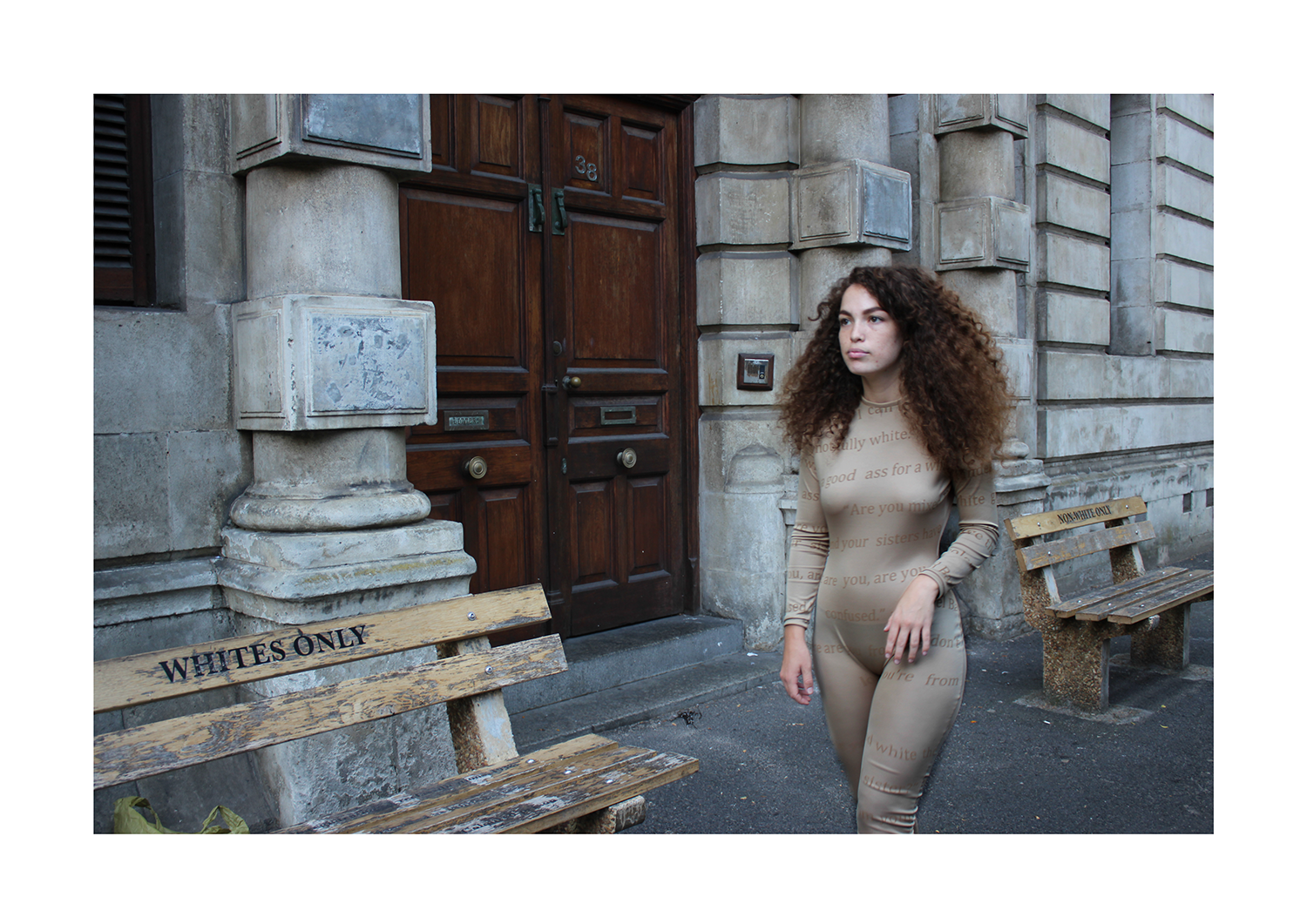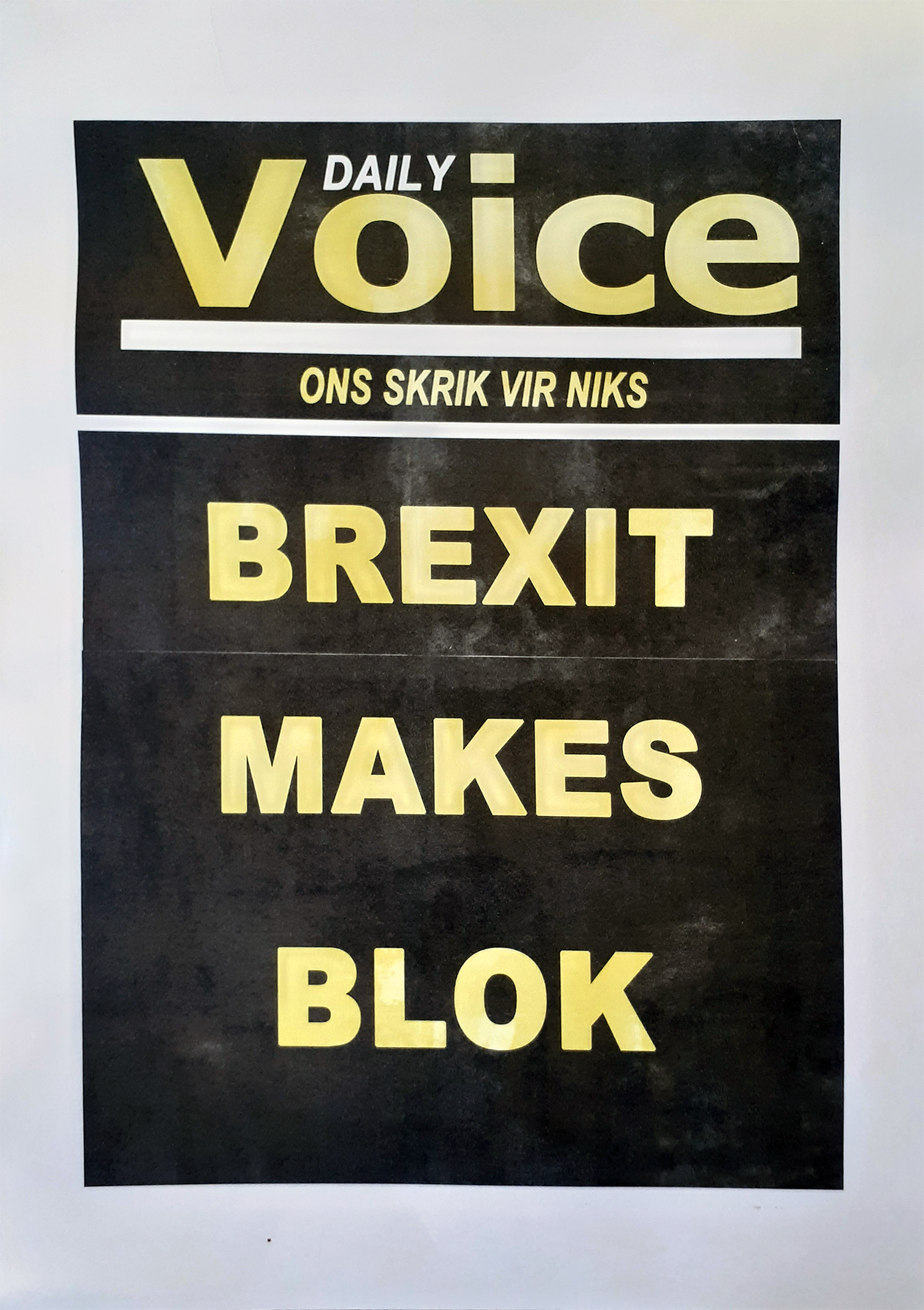That people labelled ‘coloured’ through apartheid social engineering have been excelling in art, sports, music, academics (in fact, in every arena possible) throughout our history, is nothing new. What is of note is that almost three decades after the first democratic elections, we have yet to rid ourselves of the negative stereotypes associated with this labelling.
Dr Nadia Kamies for KWAAI Vol 3
Art—in all its forms—requires space with which to be tangibly established. While often, it is the art and artist themselves that one’s attention is most drawn; sometimes it is the art of curating that can be most intriguing. It takes discerning vision and a nuanced relationship with understanding the act of witnessing to intuitively feel into pieces that will co-exist together in a space, whether the gallery is digital or physical. In searching for narrative cohesion one has to consider the disruption of the senses that viewers might experience, that appreciators of art will be left provoked, moved and satiated. I would suggest that it takes an artist – of which we all are, in our own ways – to yield the skill of curation into the fullness of its intention; as an experience.

skiet_toll, 2020
Christina Leigh Fortune stands on the threshold between curator and creator—seeding an incredibly promising artistic experience through the annual curation of KWAAI, an exhibition hosting the works of coloured-identifying people. KWAAI is a reclamation and celebration of cultural and racial heritage that defies divisive marginalisation. Furthermore, Christina’s own works calls into questions modes of racial ambiguity therefore her voice permeates in the expression of identities. With the global pandemic, KWAAI Vol 3 was translated from its physical space at Eclectica Contemporary in Cape Town into a digital exhibition on their website, now in its final month of showcase it is informative, easily navigably and beautifully pieced together. All culminating into what manifests as a delight to experience from home, and I found myself feeling even more so exciting to see it unfold in the following years to come. What follows is a conversation where I caught up with artist and curator of KWAAI Vol 3, Christina.
…

Don’t keep you white, 2020
How did your artistic career begin?
My artistic career began quite literally fresh out of varsity. It evolved naturally as I began interning and then working at the gallery where KWAAI is currently on show. My time there has been an incredibly valuable learning experience, as it exposed me to opportunity and connections in this new territory of commercial art. I challenged myself and both my strengths and weaknesses became apparent, I feel quite confident now in the ways in which I can contribute to the Art World.
What are some of the most prominent themes that your work addresses?
My work speaks of my racial ambiguity and the scenarios in which it was questioned. I never felt like I could speak about it because I am white passing, so it started as a way of self-navigation, learning and accepting. My work also speaks of being in the middle and at the same time not belonging to either of my two cultures. Using symbols and text my work alludes to these ‘cultural clashes’ of sorts and by pairing the two I hope to convey the liminal space I am attempting to navigate constantly – which I hope others can relate to as well.
Since becoming a curator too, how has the role of being both an artist and a curator intersected for you? Do you feel that your artistic perspective compliments your ability to select and co-ordinate the work of other artists?
I’ve had curatorial experience with KWAAI volumes 1,2 & 3, so I’ll speak about it within that context. It has been incredibly advantageous in the sense that it aligns with my personal work and thought trajectory perfectly. Because of this it really feels like an extension of my artistic practice, being entrusted with this role allows me to carry on my work on this topic by expressing myself through another means that was not possible before. I definitely feel that because this topic is one that is so personal to my lived experience, it not only aids in curating the work, it also becomes another means of learning for myself.

Suit, 2020
KWAAI Vol 3 is wonderful. I viewed the exhibition last week and usually my experiences of virtual exhibitions are quite haphazard. This particular one was easily navigable and informative. What was it like to translate KWAAI from a physical to digital?
Translating KWAAi from a physical Exhibition to a virtual one was a first and a huge learning task for a lot of us. Luckily for me, this instalment of KWAAI was co-curated with Kirstin Warries so I didn’t have to face this new challenge alone and I leant on her quite heavily throughout the entire process. Expectedly, concerns crept up such as how having a virtual only Exhibition would affect reach and quality, but the response has been so phenomenal we are extremely impressed with it and ourselves! Of course, nothing beats that opening night and the energy of bodies in a space, however, I feel this was the best solution under the circumstances, and a virtual space opens itself up to many levels of accessibility and to a broader audience. Accessibility was no longer confined by physical hours and geographical location.
What is your vision ahead for KWAAI and what does the space lend itself to becoming?
The latest experience of KWAAI existing purely in this non-tangible realm has really demonstrated that KWAAi is a movement not confined by the walls of a Gallery space. In our multiple digital planning workshops held with the Artists we really fleshed out how KWAAI can reach into the communities and collectively came up with solutions that were sensitive to data, access to technology and Covid restrictions. I hope similar methods are employed to future instalments of the Exhibition and that the reach beyond the Gallery is prioritised. KWAAI also relies heavily on collaboration with the Artists. It would be interesting to see this extended to Artists out of the city too, other galleries, brands and collectives and establishing relationships with organisations doing active work in the community. The further KWAAI extends beyond the Gallery space the better, as KWAAI is not only a space that instigates conversation and celebration but one of representation too. KWAAI has the opportunity to re-write the narrative and challenge the often negative stereotypes associated with the term.
I really love your fluid approach to embodying various roles in the contemporary art space, what are some of the challenges of being an independent creative?
I would have to say some of the challenges would include stability and consistency in terms of work and getting paid. Nothing is promised so you’re always on the lookout for opportunity, that would not only be monetarily beneficial but ethically enriching too. This space of constant touch-and-go, can be quite unsettling as job security is always nice, but it does expose you to opportunities that remove you from the mundanities of routine. Navigating new structures and avenues that have since changed due to Covid; the role of the creative in the broadest sense has been challenged and this is uncharted territory for many of us. However, through all of this inconsistency, room has been made for me to develop myself as a credible entity that gets invited to contribute to these spaces and I have had to become the constant.

Brexit, 2020

digital gallery view



















































